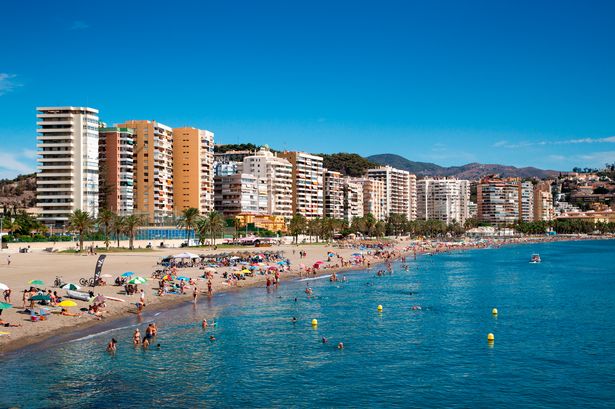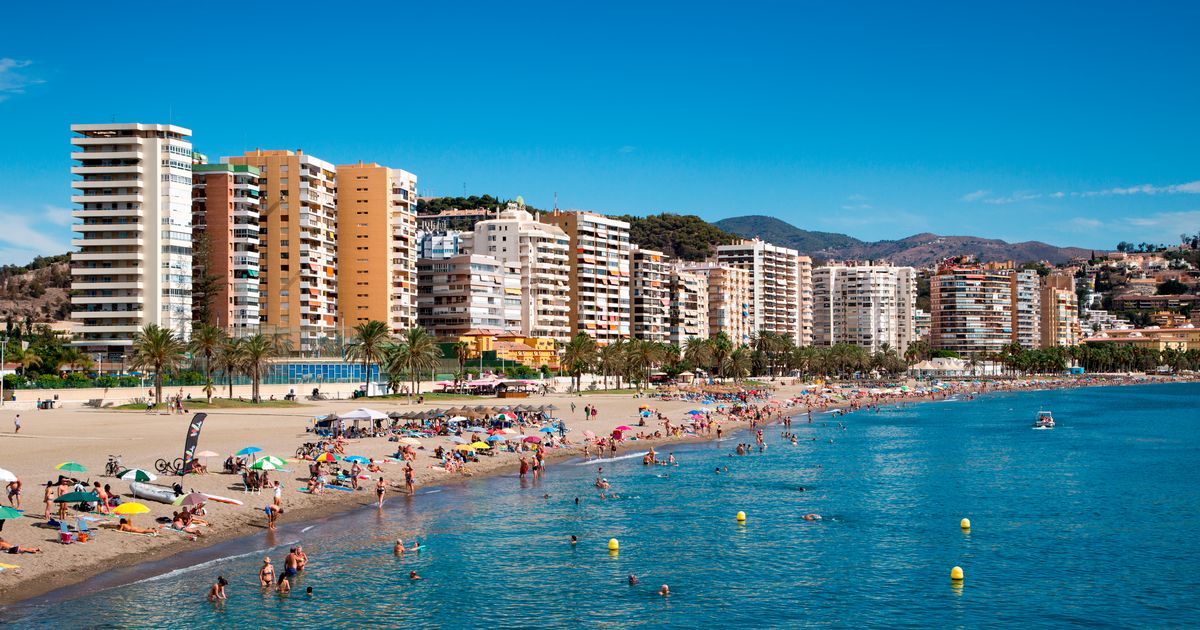A large number of cases have been reported in the popular sun spot over the past few weeks
15:04, 18 Apr 2025Updated 15:24, 18 Apr 2025
 Malaga, Costa del Sol, Andalusia, Spain. An outbreak of measles has hit the area(Image: Getty)
Malaga, Costa del Sol, Andalusia, Spain. An outbreak of measles has hit the area(Image: Getty)
Holidaymakers have been warned to be vigilant after a measles outbreak on the Costa del Sol. It comes after a large number of cases have been reported in the popular sun spot over the past few weeks.
The authorities believe the outbreak originated from Morocco. It’s believed the resorts of Fuengirola and Mijas are the worst affected places so far. The regional government confirmed this week that two new outbreaks had been detected in the provinces of Huelva and Almeria, pushing the total number of outbreaks in 2025 to nine.
The Ministry of Health and Consumer Affairs reports that 56 cases have now been recorded across the region since January, with seven outbreaks still considered active. Alarmingly, 41% of those affected have required hospital treatment, including four cases complicated by pneumonia.
Despite Andalucia maintaining a vaccination rate above 95%, authorities have warned that the virus is likely being imported. Official figures show that 27% of cases have come from abroad, most of them from Morocco, with additional cases linked to Belgium and Denmark.
Among the locally acquired infections, 12 cases have no known origin and are spread across municipalities including Malaga, Marbella, Alora, Calañas, Huelva, and Palos de la Frontera. In Malaga province alone, 32 cases have been reported.
The two latest confirmed outbreaks were detected in El Ejido (Almeria), where two Moroccan agricultural workers tested positive, and in Lucena del Puerto (Huelva), where two cases were confirmed in a Moroccan family and two more remain under review. Of all reported cases, 41% are children under 15, and 59% are adults.
NHS official measles symptoms
Measles usually starts with cold-like symptoms, followed by a rash a few days later. Some people may also get small spots in their mouth.
Cold-like symptoms
The first symptoms of measles include:
- a high temperature
- a runny or blocked nose
- sneezing
- a cough
- red, sore, watery eyes
Spots in the mouth
- Small white spots may appear inside the cheeks and on the back of the lips a few days later. These spots usually last a few days.
The measles rash
- A rash usually appears a few days after the cold-like symptoms.
- The rash starts on the face and behind the ears before spreading to the rest of the body.
Only two individuals had received a single dose, 28 were unvaccinated, and the remaining 26 had unknown vaccination histories. Health officials are urging all unvaccinated residents to come forward to reduce the risk of further transmission, especially to infants under 12 months who cannot yet be vaccinated and currently make up 14% of the total cases.
The Basque Country has been the epicentre of a revival, with 51 cases reported since November – 45 of these occurring this year. The outbreak can be traced back to a case imported from Morocco and has also affected healthcare workers, with 21 among those infected.
In Catalonia earlier this year authorities have confirmed 20 measles cases since January, dispersed across four outbreaks. The latest cluster is associated with a group of French students who visited Barcelona in March. While only two cases have been confirmed thus far, public health teams are vigilantly tracking contacts to prevent further transmission.
Simultaneously, cases have also emerged in Andalucia, Aragon, and Castile-La Mancha. The Coordination Centre for Health Alerts and Emergencies (CCAES) has issued a warning that the numbers are on a steady rise.
The resurgence of measles can be attributed to imported cases and low vaccination rates. Deputy Director of Epidemiological Surveillance in Catalonia, Jacobo Mendioroz, suggests that cases brought in from Morocco and Romania are partially responsible, accounting for approximately 34 per cent of this year’s infections.
However, another contributing factor is the subpar vaccination rates. Despite Spain generally having commendable coverage – over 90 per cent for two doses and 95 per cent for one – certain regions lag behind.
For instance, the Balearic Islands only have a 75.85 per cent two-dose vaccination rate, making communities more susceptible.
The Ministry of Health has issued a warning that the risk of exposure to the measles virus will continue to increase in the upcoming months. While the general population remains at low-risk due to high overall vaccination rates, new cases are expected to surface, particularly among those who are unvaccinated.
Measles continues to pose a significant threat due to its highly contagious nature. One infected individual can transmit the disease to 12 to 18 others.
Although many recover without severe complications, some may experience serious health issues such as pneumonia or brain inflammation. Those most at risk include infants under 12 months, adults, and individuals with compromised immune systems.
